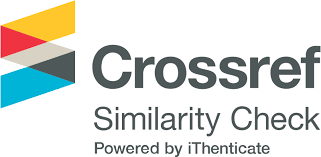INTEGRATING GAMIFICATION INTO CURRICULUM DESIGN: ENHANCING ADOLESCENT STUDENTS' DECISION MAKING, PROBLEM SOLVING AND CRITICAL THINKING CAPACITIES
DOI:
https://doi.org/10.59415/mjacs.v2i3.202Keywords:
Gamification, Decision Making, Problem Solving, Critical Thinking, AdolescentAbstract
According to research, the new age student, Gen Z, differs from his or her predecessors, and educators must develop new age pedagogical interventions to cater to this set of learners. With the changing manner the new generation learns, the education system must be revamped to include tools that meet the learner's demands. Gamification is an effective learning technique for today's generations, who are accustomed to using digital media. Gamification may also help students build critical thinking, decision-making, and problem-solving abilities by immersing them in dynamic and immersive learning experiences. Thus, the current study attempts to find out if incorporating the usage of gamification might promote critical thinking, decision making, and problem solving capabilities in adolescents.
Downloads
References
Asigigan, S. I. & Samur, Y. (2021). The effect of gamified STEM practices on students’ intrinsic motivation, critical thinking disposition levels, and perception of problem-solving skills. International Journal of Education in Mathematics, Science, and Technology (IJEMST), 9(2), 332-352. https://doi.org/10.46328/ijemst.1157
BRENDA WILSON.(2012). An Experiential Approach to Improving Students’ Critical-Thinking and Problem-Solving Skills. Retrieved from, https://aejmc.us/prd/wp- content/uploads/sites/23/2014/11/tpr83sp12.pdf
Belgin Bal İncebacak, Esen Ersoy.(2016). Problem Solving Skills of Secondary School Students. Vol. 15, No. 6, 275-285 doi: 10.17265/1537-1514/2016.06.002
Işıner Severa,, Ali Ersoy.(2019). Investigation of Decision-Making Skills of Fourth Grade Students According to Student and Teacher Opinions. International Electronic Journal Of Elementary Education. Volume 12, Issue 2, 167-182. Retrieved from, https://files.eric.ed.gov/fulltext/EJ1240234.pdf
J. Villagrasa orcid, Salvador, et.al.(2022). Gamification And ‘Gen Z’ University Students: How To Effectively Motivate Them Through Montessori Methodology. IATED Digital Library. Retrieved from https://library.iated.org/view/VILLAGRASA2022GAM
Kyvete Shatri, Kastriot Buza.(2017). The Use of Visualization in Teaching and Learning Process for Developing Critical Thinking of Students. European Journal of Social Sciences Education and Research. Volume 4, Issue 3. Retrieved from, https://revistia.com/files/articles/ejser_v4_i3_17/Shatri.pdf
Muhammad Kamarul Kabilan et al.(2022). Practices, purposes and challenges in integrating gamification using technology: A mixed method study on university academics. Education and Information Technologies. https://doi.org/10.1007/s10639-023-11723-7
Rodrigo Smiderle, Sandro José Rigo, et al. (2020). The impact of gamification on students’ learning, engagement and behavior based on their personality traits. Springer Open. Retrieved from https://slejournal.springeropen.com/articles/10.1186/s40561-019-0098-x
Downloads
Published
How to Cite
Issue
Section
ARK
License
Copyright (c) 2024 Shaikh Sara Nazneen

This work is licensed under a Creative Commons Attribution 4.0 International License.
License Statement
This work is licensed under a Creative Commons Attribution 4.0 International License (CC BY 4.0).
Authors who publish with mLAC Journal for Arts, Commerce and Sciences (m-JACS) retain copyright of their articles and grant the journal the right of first publication.
This license allows others to share, use, and build upon the work—commercially or non-commercially—as long as appropriate credit is given to the original authors and source, and any changes are indicated.
The journal encourages open access and supports the free exchange of knowledge while ensuring proper attribution of original work.


















